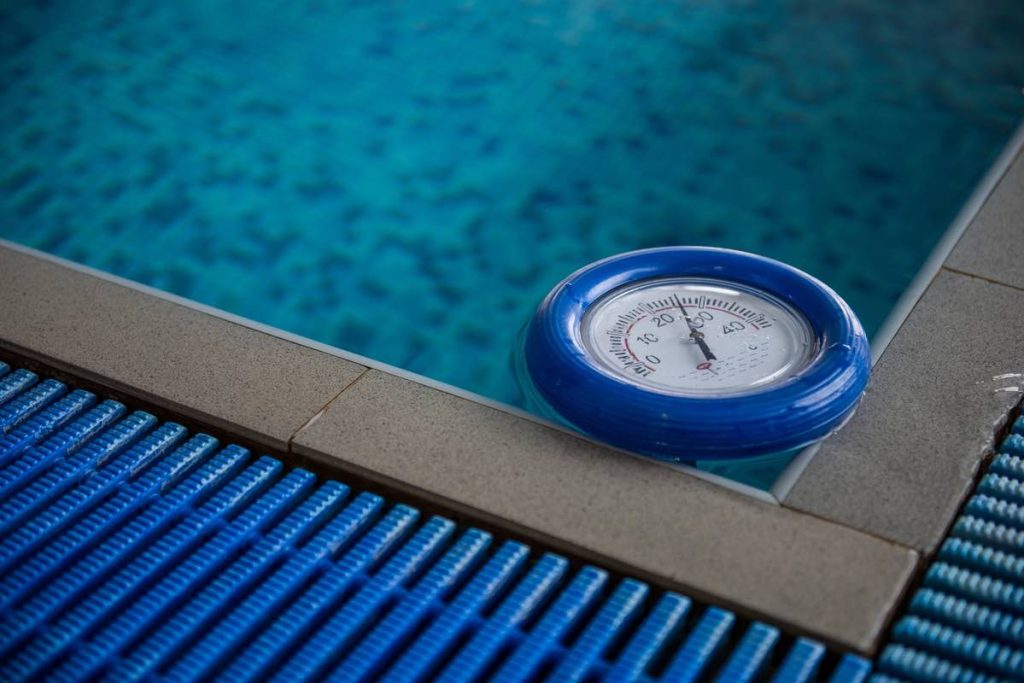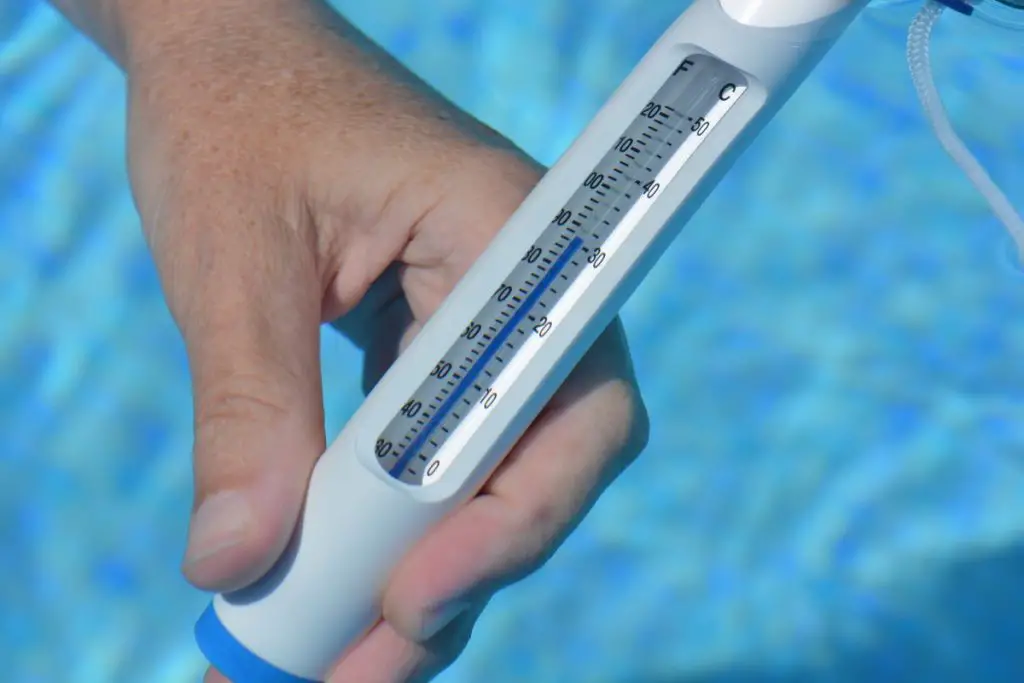If the water from your pool heater feels cold or not as warm as the thermostat’s settings, there may be a problem. Your pool heater is supposed to warm the incoming water and elevate it to the desired temperature. If it can’t complete this task, there’s more than likely an issue with the heater that needs to be addressed.
The water exiting a pool heater should be between 70 to 104 degrees Fahrenheit, depending on the thermostat. Most pool heaters don’t go below 65 degrees or above 104 degrees due to numerous regulations. If the water is colder than the thermostat, the sensor likely needs to be replaced.
Throughout this post, we’ll discuss how warm your pool water should be when it comes out of the heater, how much the average pool heater raises the water temperature, and why your heater isn’t getting the job done.

How Warm Should the Water Be Coming Out of a Pool Heater?
The water coming out of a pool heater should be exactly what the thermostat is set to. For example, if you set the heater to 75 degrees, the water should be 75 degrees. Use a water thermometer to check your pool’s temperature if you’re worried about it. Fortunately, all modern pool heaters have built-in thermometers.
According to Energy.gov, most swimming pool heaters range between 78 to 82 degrees Fahrenheit. If your pool heater freezes, it won’t work anymore. Running a pool heater when it’s frozen can cause severe internal issues. However, you can raise your pool up to 104 degrees in most situations.
Remember, the higher the water temperature, the less you’ll have to use the pool heater. Raising the temperature too much can make it very difficult to keep your utility prices down. Consider adding a solar cover, liquid pool blankets, or another form of heating to prevent your pool from cooling down between pump cycles.
How Much Does a Pool Heater Raise the Water Temperature?
A pool heater will raise the temperature as high as you set it. If it’s more than 15 to 20 degrees warmer than the current water temperature, it could take more than a day to get to the desired temperature. It’s best to heat a pool when the water is as naturally warm as possible. Maintaining a higher temperature is much more cost-effective than randomly increasing a cold pool.
American Pool recommends getting a gas heater if you want to increase the water temperature by more than 30 degrees Fahrenheit. However, an electric heater is suitable for those who only want a 10 to 15-degree temperature increase. If you choose an electric pool heater, it’ll take a bit longer to heat the pool than a gas heater.
Here’s how you can check if the water is at the right temperature:
- Check the heater’s thermostat. It’ll show you the difference between the set temperature and the current temperature.
- Put your hand in front of the closest return pipe in your pool. Next, put your hand in front of the closest suction pipe in the pool. The return pipe’s water should be significantly warmer than the suction pipe’s water.
- Use a pool thermometer. There are plenty of floating thermometers and chlorinators with thermometers. Mark the temperature difference at the same time each day for three days in a row. It should gradually increase daily.
Why Isn’t the Water Exiting Your Pool Heater Hot Enough?
The water exiting your pool heater isn’t hot enough because the thermostat is broken, there’s an electrical problem, or there’s not enough water flowing through the heater. Other causes include low gas pressure and rust on the heat exchanger. Fortunately, you can always replace a couple of parts rather than getting a brand-new heater.
Possible Issues
- Broken thermostat: All pool heaters have thermostats. These sensors tell the heater what the water temperature is and when it needs to increase. If the thermostat is broken, it can’t tell the heater to increase the water temperature. You’ll have a heater set at 90 degrees but the water will feel the same as the rest of the pool.
- Electrical problems: Whether you have a gas or electric pool heater, it uses electricity. Gas heaters use electrical wiring to connect to a circuit breaker. The breaker supplies power to the thermostat and many other parts. Loose wires, corroded terminals, and malfunctioning breakers prevent your heater from increasing the water temperature.
- A lack of water flow: Pool Research claims not having enough water flow is one of the most common reasons your heater isn’t warming the water. Clogged filters, dirty pumps, filled baskets, and leaks will limit the plumbing from supplying enough water. Without enough water, the thermostat can’t register or adjust the temperature.
- Low gas pressure: Reduced gas pressure means your pool can’t supply the proper heat it needs to elevate the water temperature. The ignitor needs enough gas to work correctly. Most low-pressure situations happen when there are gas leaks between connection points. Rare clogs in the galvanized plumbing can cause this, too.
- Rusty components: Rust is the enemy of your pool heater. Moisture constantly surrounds your pool heater. The heat exchanger, ignitor, thermostat, and every other metal part in the heater can rust. Cover your heat when it’s raining if you’re not using it. Never cover a pool heater when it’s on, though.
Pool heaters have more parts than anything on your equipment pad. They’re loaded with exchangers, sensors, valves, and many other components that need to be maintained. Annual maintenance by a professional is the best way to prevent long-term damage to your pool heater. The small upfront maintenance costs will stop you from experiencing expensive repairs.
The size of your heater usually affects its heating capacity and the water’s ultimate temperature. Some people recommend oversized heaters to improve efficiency. Find out if that’s true in my complete guide on the topic. Is It Okay to Oversize Your Pool Heater?

In Conclusion
Pool heaters are relatively straightforward. If the temperature coming out of the heater isn’t at the set temperature, something’s wrong. These issues could range from thermostat problems to frozen pipes and more. Keep in mind that the pool takes several hours to reach the desired temperature since there are thousands of gallons of water to heat.
